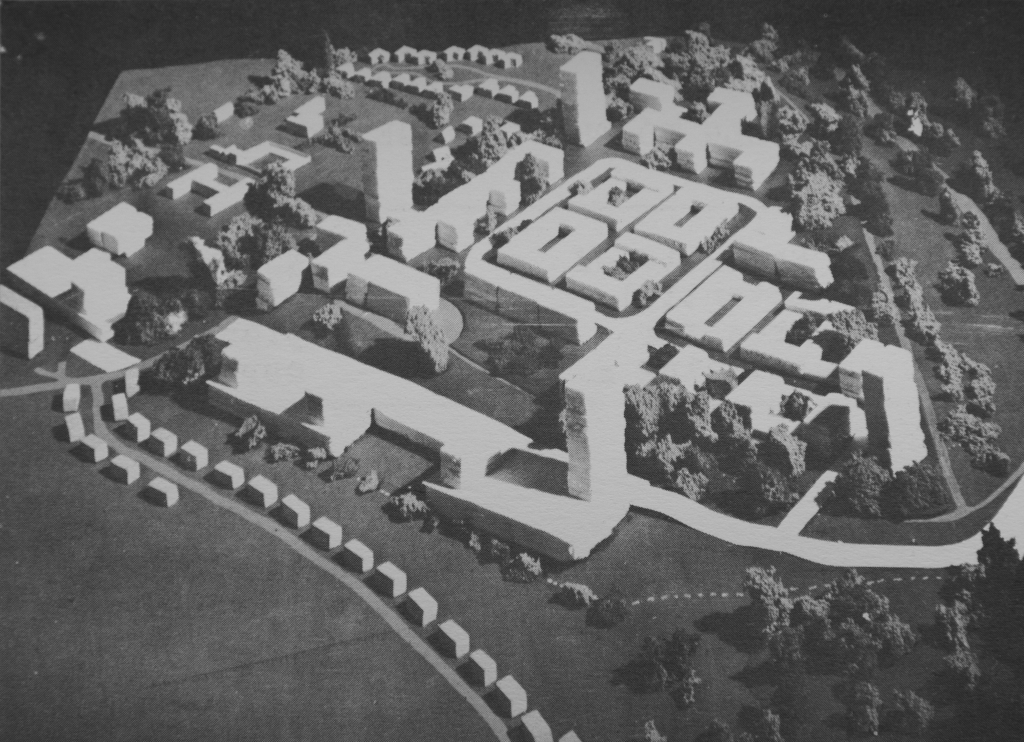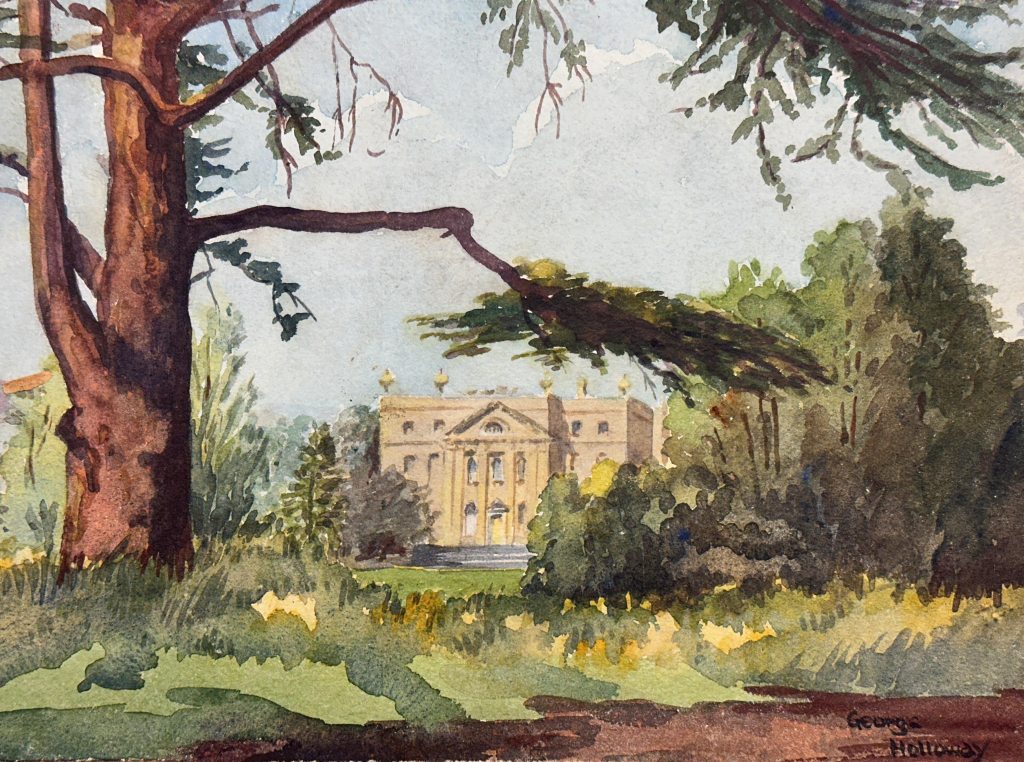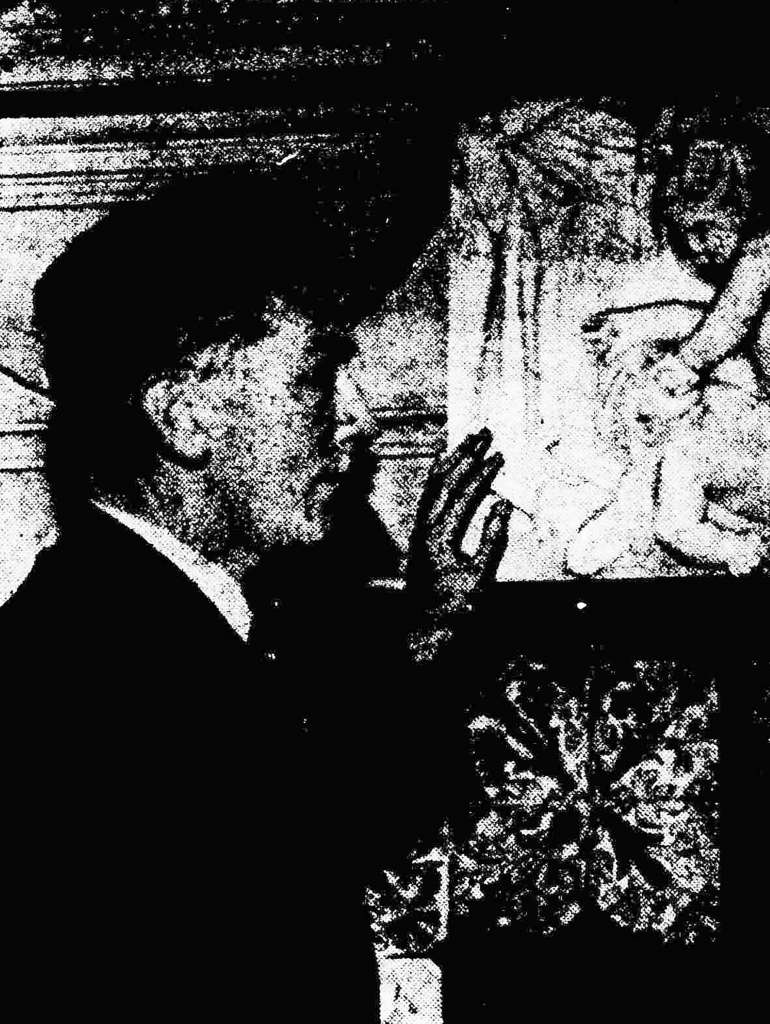Since WWII, until recent years, many people worried about the gradual decline of Kings Weston house and grounds during continued institutional use. No less so than when the building was in occupation By Bristol College of Science and technology. Initially moving departments from Ashley Down Campus in 1961, their plans for an extensive concrete campus and the change into a university caused local alarm, the scale of the planned facilities concerning even the Council Planning department. Eventually, resistance to the proposals meant the college were forced to look elsewhere for new premises, landing on a site outside Bath where Bath University was eventually founded.

However, not everyone at the college was oblivious to the importance of Kings Weston house. Appropriately enough, it was the architecture department that were installed under the headship of Professor Kenneth Panter. He was a man with the dedication and knowledge to begin restoration work on the building and reverse some of the vicissitudes inflicted on the place since 1938. Since that time the house had become a buildings site, before being hastily patched up for wartime occupation by the military. At the end of hostilities, it became the meanwhile home to Lawrence Weston a primary school. Neither of these temporary uses of the building had much care for the heritage features of the property. By 1961 it was described as “seedy and down-at heel”, with “tottery” chimneys and broken windows. The school had covered the mahogany doors with white paint, and the collection of paintings had been moved to the safety of the city Museum and Art Gallery.
Professor Panter commissioned urgent works to halt decay, but perhaps the biggest challenge of his eight years with the house was repairing the famous skyline. The monumental chimney arcade had been dismantled between 1959 and 1960, the Ministry of Works having “agreed that the chimneys must be taken down because they are actually dangerous.” Scaffolding had been in position so long that it was “in danger of taking root”, was “festooned” around the remains of Vanbrugh’s chimney arcade.
Recognising the importance of the chimneys to Vanbrugh’s design, Panter secured public money to rebuild them. Finally, by September 1968 the press was able to report that a new Doulting stone arcade was being hoisted into place. Towards the end of the department’s time at Kings Weston, Professor Panter was able to proudly tour reporters round the restored building with 120 students filling its rooms. Many works had been undertaken so fastidiously that the efforts required could hardly be guessed at. The hanging staircase had new beams inserted imperceptibly to replace failed Victorian ones, the ceiling of the Saloon at the front of the house had been strengthened with steel beams threaded carefully through the historic fabric, and historic plasterwork was consolidated and pinned back to walls and ceilings.

The newspaper reported the headless statue from the Echo had been retrieved and that the Professor was offering a reward for the student who succeeded in finding its lost head in the grounds.
As they toured the ongoing works, government minister Lord Kennet and Lord Hailes, chairman of the Historic Buildings Council, praised the school of architecture for their work to reinstate the chimney arcade. The school had spent more than £40,000 on works, £10,000 on the arcade alone, with the bulk of that having been secured from the HBC. This was Panter’s crowning achievement at Kings Weston. He continued with the architecture department when it moved to the new bath Campus in 1970 and the next organisation to occupy the house, Bristol Constabulary, were far less caring of the building.
We can’t find much more information about Professor Kenneth Panter and his efforts at Kings Weston. It’s a shame that, as someone so closely involved with protecting the house, his role is not better known. Naturally, there’s little evidence of his work left now, but that’s just what good restoration should be.


